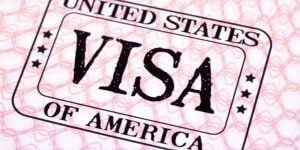
Healthcare in the United States can be a double-edged sword. On the one hand, the country is known for its top-notch medical facilities; on the other hand, treatments and medications can be prohibitively expensive because the US does not have a public healthcare system in place. This is why expats moving to the United States must have health coverage, whether this is via Medicaid, supplied through your employer, or purchased independently. This is why it is essential to get acquainted with the specifics of the US healthcare system and health insurance before moving. This guide aims to prepare expats by explaining the structure of the US system, how to access care, and what to expect in terms of coverage and costs.
When travelling to the US as a tourist, you should also purchase a comprehensive travel insurance plan in your home country before arriving to cover you throughout your stay. Navigating the US health system, especially if you come from a country with a public health system, can be very confusing.
Public healthcare in the US
Unlike most European countries, the United States doesn't have a national healthcare system. What this means in practical terms is that most American residents need to take care of their health insurance needs on their own.
However, certain population groups have their health needs covered by the government via Medicare , Medicaid, and the Children's Health Insurance Program (CHIP).
Being in the U.S. for five years as a lawful permanent resident is a key requirement for both Medicare, Medicaid and CHIP eligibility for most non-citizens. After that period, if you meet other criteria (such as age for Medicare or income for Medicaid), you can apply and potentially receive coverage.
For Medicare, U.S. citizens and lawful permanent residents (green card holders) who are at least 65 years old or have a qualifying disability and sufficient work history can enroll, but coverage is limited to healthcare received within the United States. For Medicaid, eligibility is generally restricted to those who reside in a U.S. state and meet income and immigration requirements.
So, what do these programs provide, if you do qualify?.
Medicare
The Medicare program is comprised of several parts:
- Part A (hospital insurance): Covers inpatient hospital care, skilled nursing facility care, hospice care, and some home health care services.
- Part B (medical insurance): Covers outpatient services
- Part C (Medicare Advantage): Offers an alternative to original Medicare (Part A and Part B) and is provided by private insurance companies
- Part D (prescription drug coverage): Provides coverage for prescription medications. It's offered through private insurance plans approved by Medicare.
In most cases, once you qualify for Medicare, you will be automatically enrolled in parts A and B. Note, however, that part B involves additional payments, and you are free to opt out of it.
Medicaid
Medicaid provides health coverage for individuals with low income. Note that each state in the US defines its own Medicaid eligibility criteria. Typically, the things considered include age, state of health, income, immigration status, and more. Remember, you must have lived in the US legally for at least five years to qualify.
Children's Health Insurance Program
Children's Health Insurance Program covers health care costs for children under 19. CHIP is currently funded through fiscal year 2027. For expats, the program provides health coverage to children in families with incomes too high for Medicaid but too low to afford private insurance. Some states offer CHIP coverage to lawfully residing children and pregnant women, regardless of how long they have been in the U.S., waiving the five-year waiting period for certain groups
Affordable Care Act for expats in the US
The Affordable Care Act (ACA) was signed into law in 2010 under President Obama. This law brought about major health insurance reforms in the United States that affect all residents. It includes rules for individual coverage, employer obligations, and specific provisions for expats and non-citizens.
Employer obligations under the ACA
If you are employed by a company in the US that has over 50 employees and you work over 30 hours per week, your employer will provide you with health insurance that is affordable and offers minimum value. Currently, coverage is considered “affordable” if your share of the premium for employee-only coverage does not exceed 9.02% of your household income. This is an official requirement for employers in the US, and failure to provide insurance will result in a penalty. For 2025, if the employer does not offer coverage to at least 95% of full-time employees, the penalty is USD 2,900 per eligible employee (minus the first 30 employees).
As an employee, you will be required to pay part of the insurance premium offered by the employer, depending on your household income.
Individual coverage requirements
In the past, all persons residing in the US (including expats) had to purchase an ACA-compliant health insurance policy, otherwise they would risk paying a fine. Now the federal government has revoked this mandate, but some states, including California, Massachusetts, New Jersey, Rhode Island, Vermont, and Washington D.C., have im their own mandates with a range of penalties for not having health insurance.
ACA requirements for expats
As an expat, if you are paying taxes in the US and spend 35 days or more a year in the country, you may be required to acquire an ACA-compliant plan. U.S. citizens, legal residents, resident aliens, and some non-resident aliens may be subject to this requirement, although certain students and diplomats are exempt. If you are physically present in a foreign country for at least 330 full days within a 12-month period, you qualify for an exemption from the ACA coverage requirements.
Private health insurance in the USA
All private health insurance policies in the US operate on a system of premiums (fees) and deductibles (the amount up to which the individual is required to pay). Based on your insurance package, you will pay a premium each month. When you have an operation or long-term treatment, your insurance company will begin to cover your care only after the deductible is met. The lower the deductible, the higher the monthly premium. Routine doctor visits and exams are covered by a flat fee. Prescription medications are also covered in health insurance packages, either by a co-pay or once your deductible is met.
Employer provided plans
Your employer can provide private health insurance, or you may purchase coverage individually. Employer-offered health insurance can come in the form of a lower premium or a Health Savings Account, which allows you to deposit untaxed pay into a special account used solely for medical services.
Employer-sponsored health plans are generally more affordable for employees, as the employer typically pays a chunk of the premium, and contributions are made on a pre-tax basis, reducing taxable income for both the employer and employee. As explained above, under ACA, larger businesses are required to provide health insurance, but smaller businesses are not obligated to do so, though many choose to offer it as a benefit to attract and retain staff. It is not required that US employers subsidize health coverage for employees. However, since healthcare insurance is expensive, it is a benefit that many employees will look for when applying for a job and a way for employers to distinguish themselves.
Choosing a private health insurance plan in the US
When choosing a private health insurance plan, expats should carefully consider aspects like coverage area, annual limits, and exclusions. Coverage limits and exclusions can be very different plan-by-plan, so you should select a plan with a limit high enough to cover all potential medical expenses, as US healthcare costs are among the highest in the world. Exclusions may include dental, vision, mental health, and maternity services, which can usually be added in as optional extras (for an additional cost, of course!). Expats should also evaluate the strength of the insurance provider's clinics and hospitals in their area. This may seem odd to outsiders, but hospitals and clinics only accept certain insurance plans because healthcare providers will contract with insurance companies to become part of their "network" or "preferred provider" network.
Good to know:
A Social Security number (SSN) or Individual Tax Identification Number (ITIN) is used to track individuals for tax purposes and is a common ID in the United States. Permanent and temporary residents should request an SSN or ITIN when they are granted a non-visitor visa. To sign up for a private health insurance policy, you must provide one of these pieces of identification. However, international health insurance plans may not always require an SSN or ITIN, making them more accessible for newly arrived expats or those on short-term visits.
International health insurance
You can also subscribe to international health insurance before moving. There are many insurance companies to choose from, according to your needs and budget. International health insurance is especially important for those expats who may travel frequently between countries or who want coverage that extends beyond the US. These plans typically offer worldwide coverage, access to a global network of hospitals and clinics, and may include benefits such as emergency medical evacuation, repatriation, and multilingual assistance. Getting your coverage this way often cheaper than comprehensive private health insurance in the US, especially for expats who are not eligible for employer subsidies or government programs.
Important:
When selecting an international health insurance plan, consider your age, medical history, and any pre-existing conditions. Ensure you understand what treatments your insurance will cover, how much they will cover, and what you will pay out of pocket. Many plans do not automatically cover pre-existing conditions, so you may need to purchase additional coverage if required.
Hospitals in the US
Most hospitals in the US are privately owned and managed by non-profit or investor boards, and they are typically well-equipped with world-class technology. Waiting times vary depending on the hospital and type of care needed, but private insurance can significantly reduce delays for major procedures. Most importantly, health insurance is essential for managing costs. Without it, you could pay USD 300 to USD 600 for a basic doctor visit, USD 1,200 or more for an ambulance, and upwards of USD 3,000 per day for a hospital stay, depending on the state and services required.
How to find a general practitioner in the US
When looking for a medical practitioner, start by consulting your insurance company's list of covered doctors and hospitals, then check local databases and ask friends or colleagues for recommendations. Once you've chosen a practitioner, contact the hospital directly to schedule an appointment. Your first visit will usually include questions about your medical history and current health, so bring all necessary documentation. You can book follow-up appointments if needed to find a doctor you feel comfortable with.
How to find a specialist practitioner in the US
When seeking a specialist, check whether your insurance requires a referral from your general practitioner, then explore local medical databases such as the American Medical Association and Medicare.gov to find a suitable specialist. Note that dental care is typically not included in standard health plans, so you're free to choose your own dentist unless your employer provides a dental add-on.
Mental health in the US
In the USA, your mental health and physical health are typically covered under the same insurance plan. However, every insurance plan will be different in terms of what it covers. When you sign up for insurance, make sure you know what your plan covers in relation to mental health, including therapies, counselling, and prescription medications.
If you are seeking mental health care without insurance coverage, community mental health centers and nonprofit organizations may offer low-cost services. In a crisis, emergency mental health care is available through hospital emergency rooms and is generally covered by most health plans. If you are not covered by insurance, you could end up being billed for this help.
As with most healthcare in America, costs can vary wildly, but with insurance, a typical therapy session may cost $20–$50 in copays (the bit that you pay toward the treatment). Without insurance, private therapy can range from $100–$250 per session or more, depending on your therapist. Prescription costs again will depend on your insurance coverage.
Thankfully, U.S. law requires most health plans to offer mental health and substance use disorder coverage on par with medical and surgical coverage, but always check your policy for details.
Pharmacies in the US
You won't have any problem finding a pharmacy in the US because they're located in hospitals, clinics, grocery stores, and large department stores. Compared to pharmacies in other countries, US pharmacies like CVS and Walmart are large and stock a wide range of consumer goods alongside prescription and over-the-counter medications.
As an expat, you should be able to get all the medication you need, but medication is expensive, so save all receipts to claim costs with your health insurance provider. If bringing medication from abroad, it must be for short-term, personal use and accompanied by a doctor's prescription.
Good to know:
Some US states have decriminalized or legalized marijuana for medical and recreational use. You may see dispensaries in your city, and requirements for purchase vary by state.
Useful links:
Map of Hospitals and Clinics in the USA
Understanding Health Insurance in the US
We do our best to provide accurate and up to date information. However, if you have noticed any inaccuracies in this article, please let us know in the comments section below.











